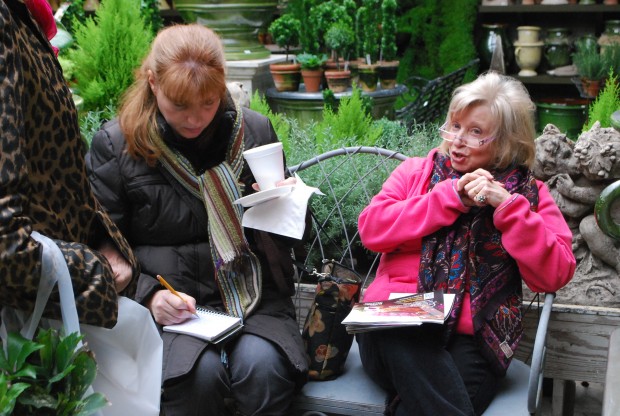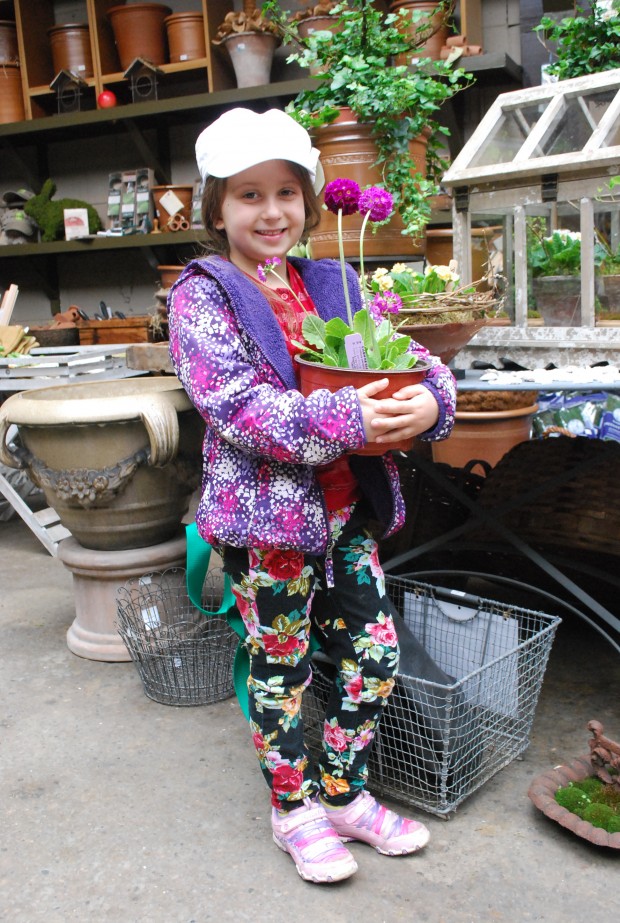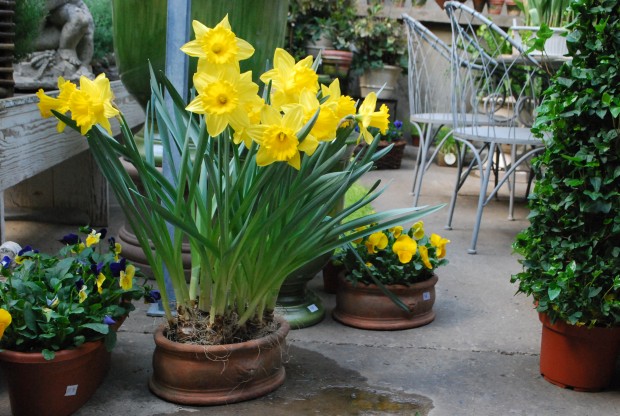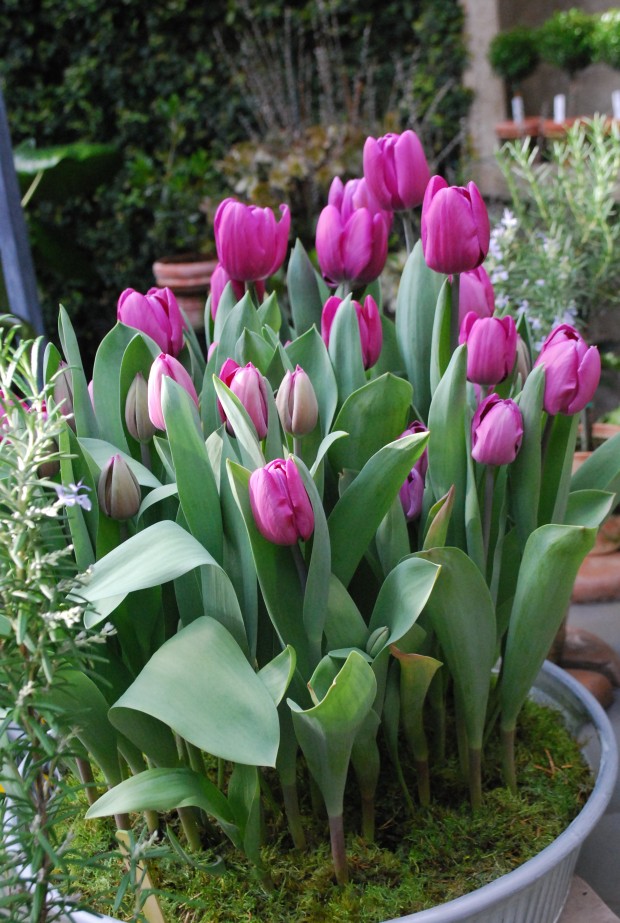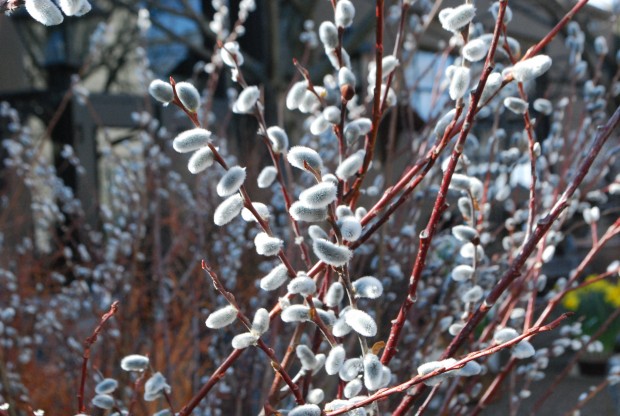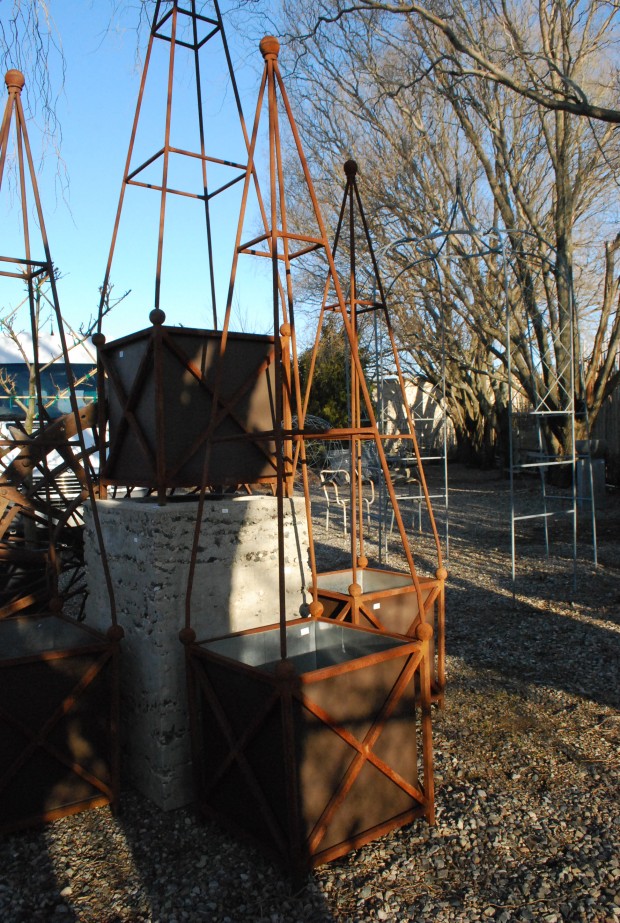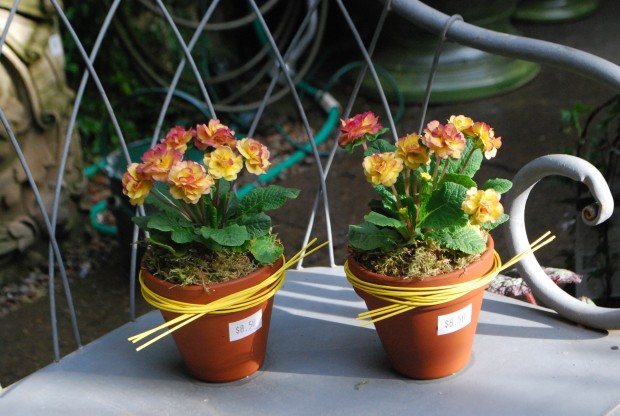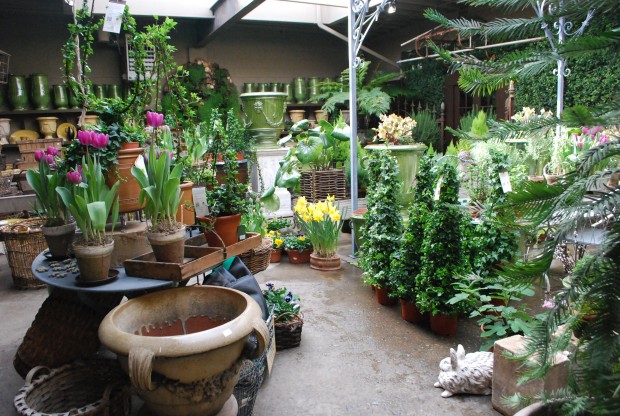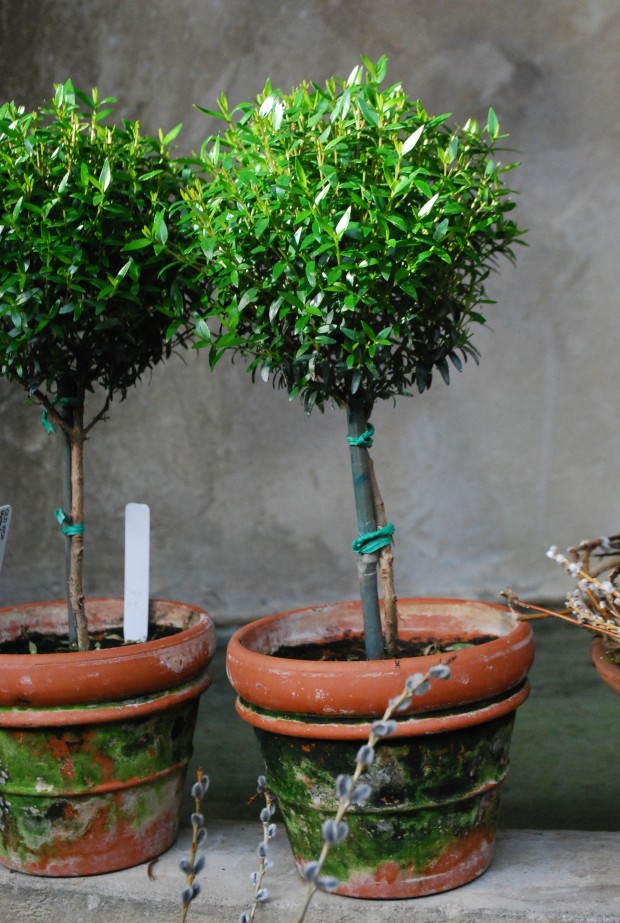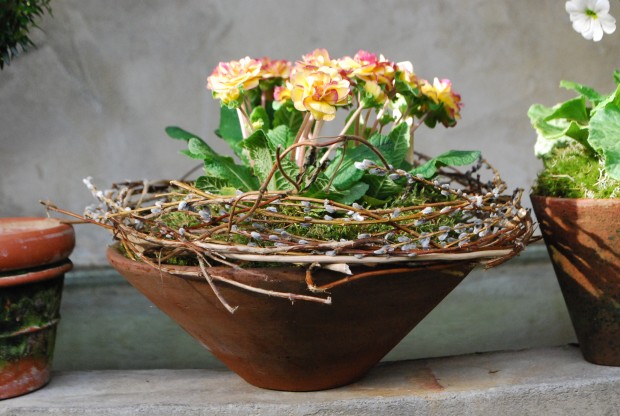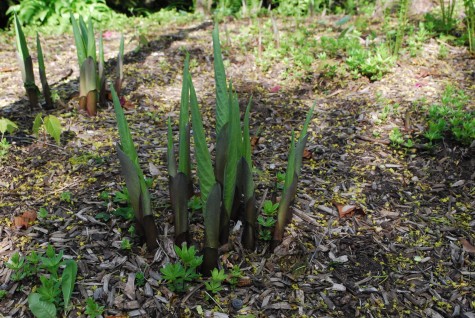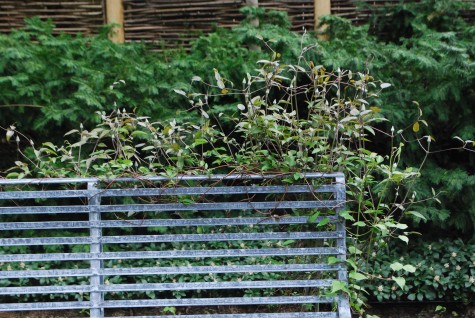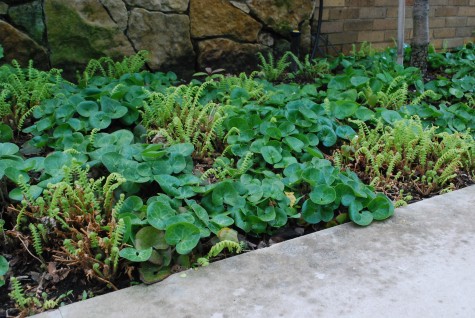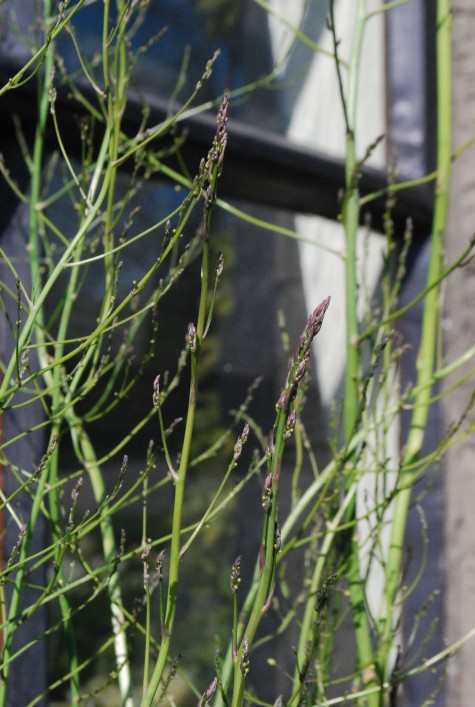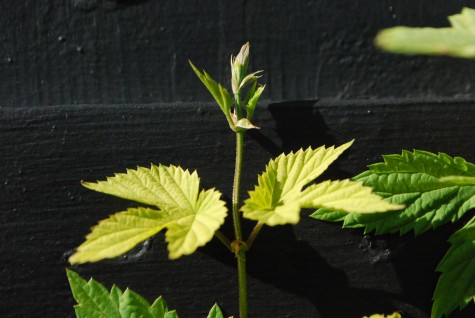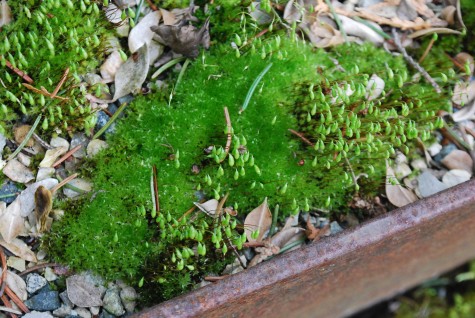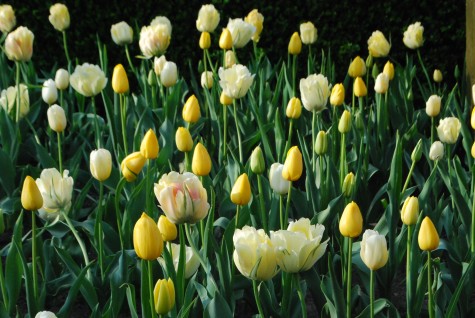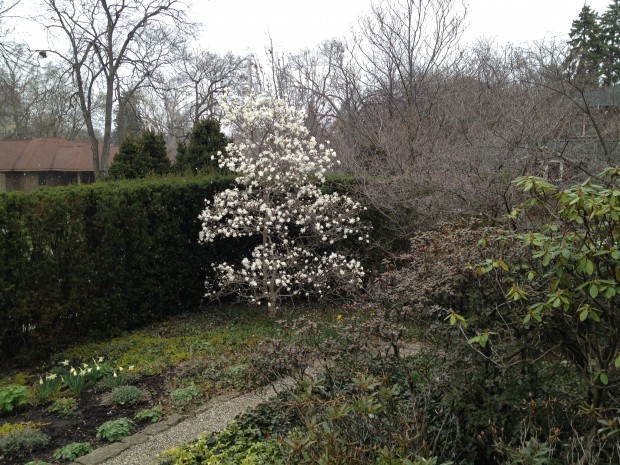 I see a few signs of spring. The crocus have come and gone. The magnolia Stellata is in full bloom, weeks behind its usual appearance. The grass is greening. The trees are budding out. A few forsythia are blooming, halfheartedly. Their flower buds hated the intense cold of this past winter. There are daffodils and pushkinia here and there. We have had a smattering of spring. Our night temperatures have been hovering around the freezing mark for weeks. Last week’s snow flurries on and off culminated in a brief but intense snow that actually stuck to the ground. Wow.
I see a few signs of spring. The crocus have come and gone. The magnolia Stellata is in full bloom, weeks behind its usual appearance. The grass is greening. The trees are budding out. A few forsythia are blooming, halfheartedly. Their flower buds hated the intense cold of this past winter. There are daffodils and pushkinia here and there. We have had a smattering of spring. Our night temperatures have been hovering around the freezing mark for weeks. Last week’s snow flurries on and off culminated in a brief but intense snow that actually stuck to the ground. Wow.
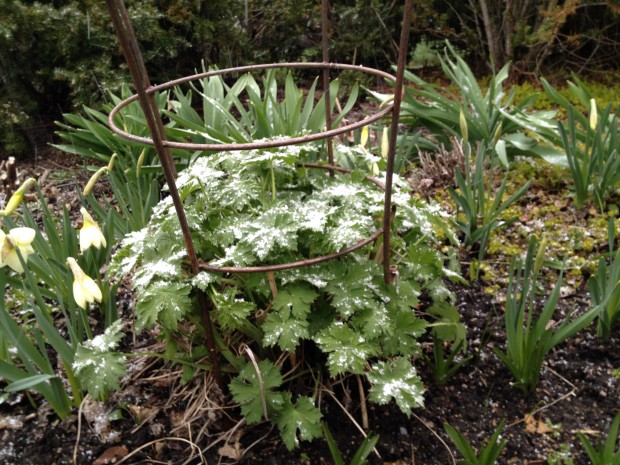 Night before last was 30 all night long. At 6 am the temperature dropped to 27. At 6:45, when I loaded the corgis in the car, I realized that my windshield would need scraping. The grass was glittery with ice. All of my early spring flowering plants were frowning. The chionodoxa were laying flat on the ground, stunned. The flowers at the top of my magnolia stellata looked like wet blobs of kleenex. The hellebore flowers were stooped over. The delphinium were caked with ice.The gravity of this late frost dragged everything down-including me.
Night before last was 30 all night long. At 6 am the temperature dropped to 27. At 6:45, when I loaded the corgis in the car, I realized that my windshield would need scraping. The grass was glittery with ice. All of my early spring flowering plants were frowning. The chionodoxa were laying flat on the ground, stunned. The flowers at the top of my magnolia stellata looked like wet blobs of kleenex. The hellebore flowers were stooped over. The delphinium were caked with ice.The gravity of this late frost dragged everything down-including me.
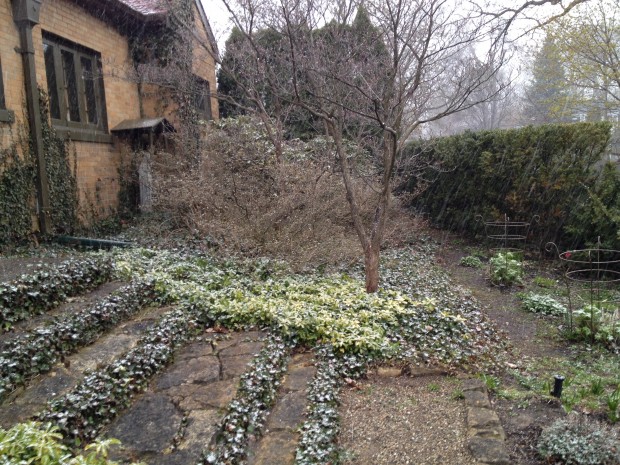 This April has been anything but hospitable. Snow in April means we had snow every month for the past 6 months. Not so unusual. Snow this late in April is a little unusual. Years ago I kept a garden diary. It was not all that interesting-just a recording of what was blooming or happening when. It must have been in the early 8o’s – 6 inches of snow on April 16. It made me laugh – I wrote that in the diary. This gratuitous winter dusting the other day was insulting. It made me scowl.
This April has been anything but hospitable. Snow in April means we had snow every month for the past 6 months. Not so unusual. Snow this late in April is a little unusual. Years ago I kept a garden diary. It was not all that interesting-just a recording of what was blooming or happening when. It must have been in the early 8o’s – 6 inches of snow on April 16. It made me laugh – I wrote that in the diary. This gratuitous winter dusting the other day was insulting. It made me scowl.
 Milo had an intuitive grasp of the situation. We don’t go to the rose garden in the winter. Nonetheless, there he was, trying to get me to venture out. As if I wouldn’t notice the winter weather.
Milo had an intuitive grasp of the situation. We don’t go to the rose garden in the winter. Nonetheless, there he was, trying to get me to venture out. As if I wouldn’t notice the winter weather.
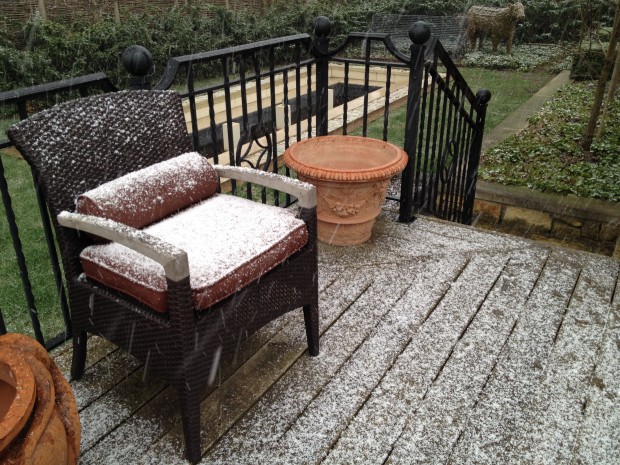 I most certainly am ready for that incarnation of spring that has night temperatures well above freezing. Though I am perfectly comfortable outdoors on a afternoon that is 55 degrees, I would not be so happy spending the night outdoors at 30. My trees, shrubs and perennials have been in a deep sleep all winter. A few obnoxiously cold nights won’t deter them from their scheduled appearance.
I most certainly am ready for that incarnation of spring that has night temperatures well above freezing. Though I am perfectly comfortable outdoors on a afternoon that is 55 degrees, I would not be so happy spending the night outdoors at 30. My trees, shrubs and perennials have been in a deep sleep all winter. A few obnoxiously cold nights won’t deter them from their scheduled appearance.
 Our tulips are well out of the ground. A 27 degree night did not faze them. They grow actively in a very cold part of the year. All of those plants that emerge in the early spring are programmed to not only survive, but they thrive in cold weather. The netting of ice of the leaves of the tulips gone over in the cold did not please me, but I was not worried. They are familiar with cold weather.
Our tulips are well out of the ground. A 27 degree night did not faze them. They grow actively in a very cold part of the year. All of those plants that emerge in the early spring are programmed to not only survive, but they thrive in cold weather. The netting of ice of the leaves of the tulips gone over in the cold did not please me, but I was not worried. They are familiar with cold weather.
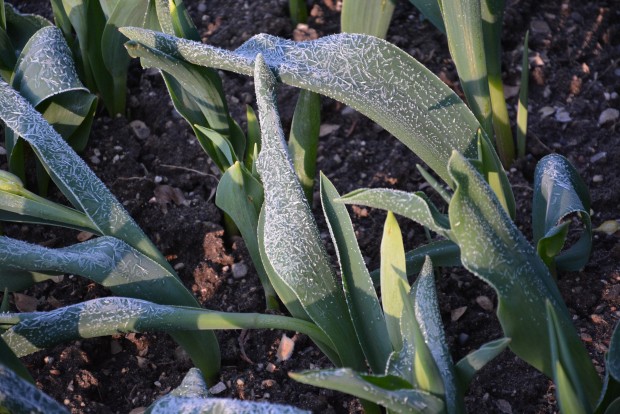 I was sure they would recover. What doesn’t bounce back? Any plants that you have bought recently that have been raised in a greenhouse need to put one toe in the water at a time in April. This is known as hardening off. A perennial that has been wintered outdoors in an unheated space is ready for whatever insult April has a mind to deliver. A perennial that has been heated, and brought on ahead of its normal time to emerge can be damaged by exposure to cold. They need to be exposed to the real world-one step at a time.
I was sure they would recover. What doesn’t bounce back? Any plants that you have bought recently that have been raised in a greenhouse need to put one toe in the water at a time in April. This is known as hardening off. A perennial that has been wintered outdoors in an unheated space is ready for whatever insult April has a mind to deliver. A perennial that has been heated, and brought on ahead of its normal time to emerge can be damaged by exposure to cold. They need to be exposed to the real world-one step at a time.
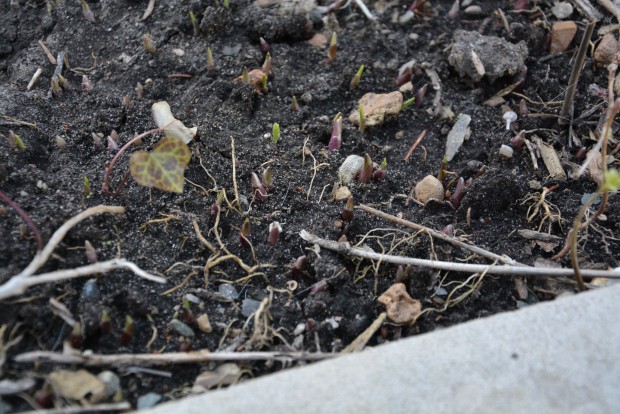 Greenhouse grown plants need some time to adjust to the real world. This process can be a bore to a gardener who is impatient for spring. Out in the day-but back in at night. We haul plants in and put them out dozens of times in the spring, before the season turns. Not interested in managing the transition? Don’t acquire plants too early. Plants already in the ground are very cagey about when they decide to make an appearance. They respond to daylight length, and temperatures. Once they are in active growth, close to freezing temperatures can damage the new shoots or flowers. Extended below freezing weather can damage flower and leaf shoots-every gardener in Michigan got a PhD in that science a few years ago. Your in ground plants are fine, given our very cold April.
Greenhouse grown plants need some time to adjust to the real world. This process can be a bore to a gardener who is impatient for spring. Out in the day-but back in at night. We haul plants in and put them out dozens of times in the spring, before the season turns. Not interested in managing the transition? Don’t acquire plants too early. Plants already in the ground are very cagey about when they decide to make an appearance. They respond to daylight length, and temperatures. Once they are in active growth, close to freezing temperatures can damage the new shoots or flowers. Extended below freezing weather can damage flower and leaf shoots-every gardener in Michigan got a PhD in that science a few years ago. Your in ground plants are fine, given our very cold April.
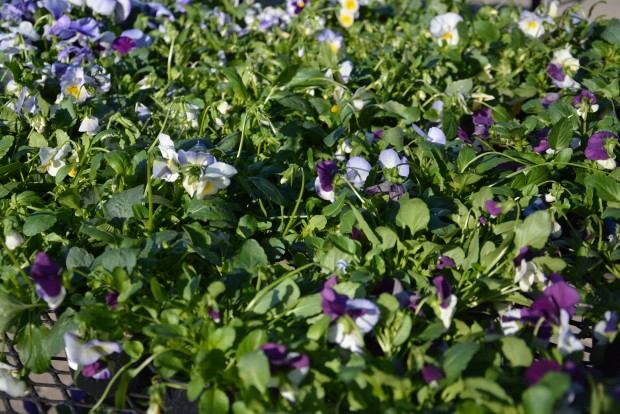 These greenhouse pansies, even though they were covered, took a hit from the cold. They will recover. But they were not ready to be turned out into the cold. Any plant not used to the cold needs protection when the night temperatures dip. Or a lengthy hardening off. The daytime temperatures are not so critical. Watch the night temps. And the soil temps. This will make you a better gardener.
These greenhouse pansies, even though they were covered, took a hit from the cold. They will recover. But they were not ready to be turned out into the cold. Any plant not used to the cold needs protection when the night temperatures dip. Or a lengthy hardening off. The daytime temperatures are not so critical. Watch the night temps. And the soil temps. This will make you a better gardener.
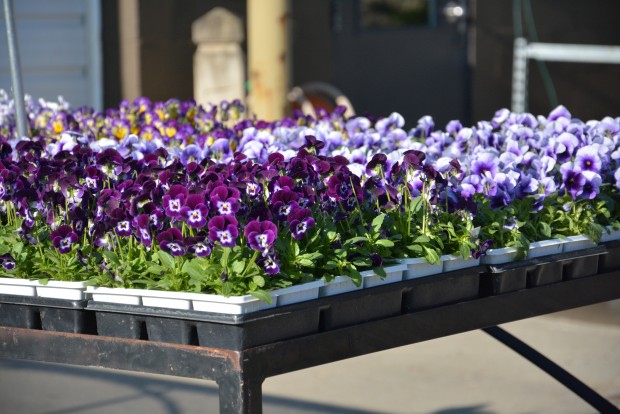 These violas were grown cold. They shrugged of the dusting of snow, and the 27 degrees overnight. If you plant in early spring in our zone, remember that April is not always a spring month. The plants you have in your garden that lived through our winter-they will be fine. Thinking to plant new plants in a garden or a container? Look for spring annuals and perennials that are grown cold. If you can’t tell-ask. Any plant nudged along with heat under glass will be vulnerable to variations in temperature. Baby them. That said, any cold friendly plants you put to the soil now will be spilling way over the edges of your spring in just a few weeks. I promise.
These violas were grown cold. They shrugged of the dusting of snow, and the 27 degrees overnight. If you plant in early spring in our zone, remember that April is not always a spring month. The plants you have in your garden that lived through our winter-they will be fine. Thinking to plant new plants in a garden or a container? Look for spring annuals and perennials that are grown cold. If you can’t tell-ask. Any plant nudged along with heat under glass will be vulnerable to variations in temperature. Baby them. That said, any cold friendly plants you put to the soil now will be spilling way over the edges of your spring in just a few weeks. I promise.
